#columns & capitals
Explore tagged Tumblr posts
Text
Driveway in Santa Barbara

0 notes
Text
Driveway in Santa Barbara

0 notes
Text
Driveway in Santa Barbara

0 notes
Text
Driveway in Santa Barbara

0 notes
Text
When building a startup, think like a buyer
When building a startup, think like a buyer
“Never run a dual-track process.”
You’ll probably hear this advice if you ask an investor about raising money and selling a business concurrently, and it’s good advice. The two processes are so different, so all-consuming and require such different priorities that it is nearly impossible to do both well. Running a sale process, though, is much different from positioning your company for…
View On WordPress
#advisors#Column#corporate finance#entrepreneurship#human resource management#M&A#Mergers and Acquisitions#prism#sales#startups#Talent#venture capital
0 notes
Text
TechCrunch: Who are the major revenue-based investing VCs?
TechCrunch: Who are the major revenue-based investing VCs?

David Teten Contributor
More posts by this contributor
How To Run Your Company Based On Metrics
This guest post was written by David Teten, Venture Partner, HOF Capital. You can follow him at teten.com and @dteten. This is part of an ongoing series on Revenue-Based Investing VC that will hit on:
So you’re interested in raising capital from a Revenue-Based Investor VC. Which VCs are…
View On WordPress
#Bigfoot Capital#Column#Corl#david teten#Decathlon Capital#Earnest Capital#finance#Founders first capital partners#Funding#Fundings&Exits#HOF capital#indie.vc#Lighter Capital#revenue based investing#revenue-based financing#Scaleworks#startups#Venture Capital#venture debt
0 notes
Text
Bitcoin Stealing Golds Share As An Inflation Hedge
Precious metal investors have faced a grueling year as gold prices contracted after two years of gains.
In recent days, however, gold and silver prices reached their highest levels since the sharp selloff in November. They remain a good alternative asset to invest in, Stephen “Sarge” Guilfoyle wrote in a recent Real Money Pro column.
“Now with consumer inflation spiking to a 7% annual rate, and wages rising just 4.7% annually, investors are waking up to one of the yellow metal's perceived functions, that of being an inflation hedge...,” Guilfoyle wrote recently on Real Money.
These days, though, cryptocurrencies have received some of the capital that investors would have sunk into gold or silver previously.
“There is no doubt in my mind that Bitcoin or Ethereum have taken share away from Gold or Silver where alternative (ex-fiat money supply) investment is concerned,” he wrote. “While folks of a certain age (mine) rely on precious metals as a way to circumvent the system, that is precisely how those younger than I look at cryptos.”
https://www.thestreet.com/.amp/investing/bitcoin-gold-silver-and-ethereum-can-all-serve-as-inflation-hedges
0 notes
Text
Easy embroidery alignment for custom patch maker
Allow's state you just ended up a needlework work-- a left-chest logo sewed on tee shirts and hats-- and also currently the consumer desires jackets. What's more, he desires the exact same logo design on a coat back.
As it stands, the logo measures 3.5 inches large, but now have to be 17 inches wide. To top all of it off, the client wants the finished coat "yesterday.".
As a custom patch maker, you need to be cautious. If you prepared for such an upsell, you will certainly be great. If not, you may have to redigitize the logo due to the fact that it can not be bigger without distortion, overly long stitches and loss of high quality. You must change stitch types-- column stitches must come to be fills, run stitches should come to be columns as well as fills up will require extra paddings and pull compensation click here.
Transforming stitch types & lengths.
The most convenient thing to do is originally digitize your layouts to make sure that they can immediately be adjusted to fulfill any kind of need or dimension demand. If you have actually not digitized expecting an upsell, running stitches-- made use of as a synopsis-- should be transformed to column stitches. A lot of needlework software consists of automatic attributes that will allow you to click a team of stitches and also change them to fit a larger design. After that, you can expand or reduce that column to fit. Make sure any underlying fill has an edge-run rug, as well as remember that the column stitches should be offset sufficient to catch the rug to ensure that the new summary does not pull away.
In resizing a layout to be embroidered on a coat back, the existing column stitches in the smaller variation need to be longer in the larger version. However if they are too long, such stitches quickly can be altered to fills up and also can shine much like a standard column stitch; the trick is sew size. Lengthy stitches that would pull in a bigger column-stitch letter can be utilized in the fill and also be stable.
The arbitrary needle infiltrations allow you to use longer stitches to develop the sheen you require without the stitches taking out, which sheen will adhere to the contour of the letters. So for the bigger columns developed by scaling up the design, assume fill instead of split satin stitches.
Adjusting underlay.
History loads, when set the conventional method, will certainly be misshaped when you increase the layout's dimension unless you add padding and also deal with the additional pull payment. The longer stitch in the resized fill will draw more than the shorter one in the initial fill or tatami stitch.
Additional underlay has to be utilized, normally a double tatami that is set 90 degrees unto itself, to create a latticework that holds the fill in place and avoids it from retreating from any kind of synopsis or other things in the style. The fill still must be bigger to compensate for the pull that takes place as a result of its standard settings.
If, on the other hand, you configure a layered fill from the beginning, there will be no demand for the added padding-- or any compensation-- due to the fact that there will certainly be no pull. This will reduce your stitch matter by about 30%, and also save you the frustration of thread breaks as well as a cardboard-like appearance.
To do a split fill, just minimize the stitches to 1⁄3 of the density, or the quantity utilized in the initial underlay. To reach that precise density setup, figure out the number of stitches that a full density fill or tatami things includes. As an example, if it contains 15,000 stitches, the split fill needs to consist of 5,000 stitches. Upon minimizing the stitch count, bear in mind the thickness setup for future use.
Digitize the background fill making use of the new density setting. Make certain the stitch angle is absolutely no, or horizontal. The item needs to begin on top and end at the bottom. Then, replicate that object twice. Alternate the beginning as well as stop settings in the 2nd layer by starting at the bottom and also stopping on top, then add an edge-run padding to that layer. The last layer will start where the second layer ended-- on top-- and finish near the bottom.
If there is a summary on this fill, include an edge-run padding to the second layer and counter the column stitch rundown to ensure that it overlaps the fill's underlay. This will protect against the synopsis from pulling away from the fill.
This split fill will run perfectly with no string breaks, and can be raised or lowered in dimension as required. It additionally will result in a fill that moves with the coat, easily approves detail and also doesn't cause any kind of push or pull. In addition, due to the fact that there is no demand for compensation, there also will be no distortion.
Structure adds interest.
When dealing with a larger layout, particular components can be included in spark interest. The history fill does not need to be plain; instead, it can be an embossed variation of your customer's logo. If you do this, include appearance only to the last of the three layers. These extras can include interest your designs that brings your customers back.
The last layer of the fill is what your eye will certainly see, to make sure that's where you can add either a longer sew for gloss, a shorter stitch for a matte coating, a formed loaded with your client's printed logo or any other ideal structure.
Conveniently adjusting a layout's size will certainly allow you to upsell tasks more effectively. Capitalizing on the jackets currently offered on the market will boost your shop's profits. Beginning with a layered fill will certainly make it easier to move from dimension to dimension and garment to garment.
Knowing that the split fill is a choice implies you can utilize the initial fill from the smaller styles, lower its thickness, replicate it three times, alter the starting and also stopping settings on the 2nd layer, and instantly prevent the issues connected to added padding and draw compensation.
These simple steps will ensure you can make use of the smaller sized layouts you might have previously sewn, while contributing to your shop's profits with a coat to match. Digitized properly, such styles will certainly be an enjoyment to embroider and even can be your primary advertising tool for drawing in more customers.
0 notes
Text
2021 报税记
本文仅记录个人经历,不应作为任何税务建议
Introduction (TL;DR)
今天一天都是阴雨天,毫无生产力可言,适合报税。作为一个拿着低保的 Non-resident Alien F1 国际学生,一般有以下几个选项: 1. 学校提供的 Tax Clinic。例如 ISSS 就和 NVTAP 有合作,提供免费报税服务。 2. 寻求第三方软件。 3. 自己报。
去年我是通过 Tax Clinic 报税的,过程仍然略微繁琐。首先是学校和 Sprint Tax 有合作,可以免费生成 Federal Tax。生成 Federal Tax 之后,将文档提交给 NVTAP 的志愿者。虽然是 certified 的志愿者(并且我对此心怀感激),但是对把我的所有税务信息传到一个 Google Drive 文档这种事,我还是心有余悸的。
今年的 Tax Clinic 似乎有点不同,学校的与 SprintTax 合作的网页已经下线(虽然我还是通过 Wayback Machine 找到了 SprintTax 的���口)。这次 NVTAP 的网页也有所升级,改为通过 TaxSlayer 的服务而(似乎)无需志愿者的手工干预了。然而 TaxSlayer 听说不支持 Robinhood 的自动导入,于是我将 TaxSlayer 作为备选,开始寻找第三方软件,发现了 TaxAct。
TaxAct 有以下几个很重要的特点: 1. 支持 NRA 报税,并且支持 E-File。2. 支持 Treaty 3. 宣称支持 Robinhood 的导入。随后我发现 TaxAct 支持 IRS 针对低收入人群的免费报税计划 Free File。同时支持 Federal & State 的免费 E-File,入口链接在此。最后经过仔细考虑,选择了通过 TaxAct 进行报税。注册后就是波澜不惊而无趣的填表过程。然而,最让人头大的 Robinhood 1099-B,还在后头。
Robinhood 1099-B
之所以放弃 SprintTax,主要是因为 Robinhood 上每次股票操作都需要单独填写一份 1099-B,极为繁琐。然而虽然 TaxAct 宣称支持 Robinhood,实际上却并完全无法导入。首先是并没有直接使用 Robinhood 登陆的入口,TaxAct 虽然支持 CSV 导入,Robinhood 却没有提供 CSV 导出的选项。
好在 TaxAct 还支持用 Form 8949 和 SCHEDULE NEC 完成股票这部分的报税。具体步骤如下:
TaxAct 中选择使用 Form 8949。
Robinhood 提供的 PDF 第一页下半部分应有:SUMMARY OF PROCEEDS, GAINS & LOSSES, ADJUSTMENTS AND WITHHOLDING 这个 section,底下就是 Form 8949 相关的信息。
在 TaxAct 上按行逐条输入。比如 Short A、Short B,等等。
接下来在 Schedule NEC 中,将 1099 DIV 中的 Dividend 填入 10% 的 column 中,将上述 8949 中的 capital gain 填入 30% (真高)的 column 中。
最后将 Robinhood 提供的 PDF 作为附件上传。
P.S. 其实最好不要开 Robinhood,血亏。要投资就直接 WeBull。或者像我一样,从今天开始卸载 Robinhood,等变成 Resident Alien 再卖出。
收尾
还有几点注意事项:
在 MN 的同学记得问房东要 Certificate of Rent Paid。TaxAct 算下来大约能 refund 一个月的房租。
PhD 等有奖学金的同学,记得在 MyU 里找到��今年交的学费,在 TaxAct 中作为 tuition 填进去。这部分在 1042-S 中有报告,否则你将倒欠 $2000 的 federal tax。
从下午四点开始,一直折腾到晚上快八点,跌跌撞撞,终于算是填完了。遂饿着肚子作此文,希望对各位领低保的朋友们有所帮助。
0 notes
Text
Negotiate for ‘better’ stock in equity-funded acquisitions
Negotiate for ‘better’ stock in equity-funded acquisitions
Timothy R. Bowers Contributor
Timothy R. Bowers is the Managing Partner of VLP Law Group LLP.
Andrew P. Dixon
Contributor
Andrew P. Dixon serves as Counsel with VLP Law Group LLP.
For many founders, building and selling a successful venture-backed company for cash is the ultimate goal. However, the reality is that some companies will instead receive an equity-funded acquisition proposal…
View On WordPress
#Column#Equity#financial advisor#Fundings & Exits#Mergers and Acquisitions#money#preferred stock#startups#stock#Stock Market#U.S. Securities and Exchange Commission#venture capital
0 notes
Text
TechCrunch: What seed-stage dilution tells us about changing investor expectations
TechCrunch: What seed-stage dilution tells us about changing investor expectations
A little-noticed startup financing trend has big implications for how VC firms evaluate companies raising Series A and B rounds
Dale Chang 7 hours

Dale Chang Contributor
More posts by this contributor
Why startups can’t afford to ignore customer retention
How startups can use data to grow smarter
Round sizes are up. Valuations are up. There are more investors than ever hunting…
View On WordPress
#cap table#Column#dilution#entrepreneurship#finance#Funding#Fundings&Exits#Private Equity#scale venture partners#seed funding#Seed money#seed stage#startups#stock market#Venture Capital
0 notes
Link
The 2018 Sundance Film Festival has passed, and a quiet year for deals and buzz led some to speculate films focused on people of color and women were the reason for fewer acquisitions. “Who are these movies for?” griped an influential distributor to Variety. On Twitter, “Blindspotting” producer Keith Calder perfectly summed up the fallacy in that question: “White male privilege is thinking a movie that doesn’t appeal to you is a movie that doesn’t appeal to anyone. If you are a film executive attending Sundance… at least have the class and self-respect to not anonymously trash those movies in the press.” (“Blindspotting” eventually sold to Lionsgate at the end of the festival.)
The anonymous buyer’s comments — and Calder’s subsequent rebuke — highlight underlying growing pains for a festival angling for more diverse programming, but lacking sufficient voices to champion such work.
Hollywood is an industry dominated by white men, and so’s the media, but the ethos of this year’s Sundance programming was clear: We are the outsiders, the unsung, the uncelebrated, and the marginalized. “The Tale,” “Damsel,” “Sorry to Bother You,” “The Miseducation of Cameron Post,” “Blindspotting,” “Monsters and Men” and “Monster” all centered on socially conscious messages. This year more than any other, I saw films that spoke to me on a deeply personal level. I found characters I recognized and identified with, rather than de facto representations. I did not have to choose between the white female characters or the black male characters that did not fully speak to me as a black woman.
I wasn’t inundated with a host of films that capitalized on black pain. “Precious,” a Sundance 2009 breakout, was a brilliant film — but words cannot express my joy leaving the theater last year after the quirky and carefree “The Incredible Jessica James,” one of the few movies in the 2017 lineup to have that effect. This year, I saw myself equally responsive to the female companionship of “Skate Kitchen,” and the ferocious satire of race relations in “Sorry To Bother You.”
As I (and other people of color) celebrated this year’s films and reveled in this watershed moment, I found it disquieting to hear industry colleagues and fellow critics complain that they didn’t “get” it. It was comical to hear people who live for Edgar Wright’s Cornetto Trilogyremaining lukewarm on “Blindspotting.” Carlos Lopez Estrada‘s stylized buddy comedy clearly draws from Wright’s work; in fact, if Wright were born black and grew up in the Bay Area, he would probably have made something a lot like “Blindspotting.” Furthermore, people who loved Spike Jonze’s “Being John Malkovich” or Michel Gondry’s Eternal “Sunshine of The Spotless Mind” dismissed Boots Riley’s “Sorry to Bother You” as “scattershot” or “too weird,” even though Riley channeled their surrealist storytelling methods for an all-too-timely story.
I was especially astonished to witness the backlash to “The Tale.” The movie’s central drama revolves around a disturbingly accurate scene of sexual abuse. Fandango journalist Alicia Malone confided that she overheard two men deriding the movie minutes after the premiere, with one admitting, “I didn’t need to see that.” Another added, “Why would you want to put that out there?”
I’m sure any sexual assault survivor — including Jennifer Fox, the film’s director — would argue that such discomfort is precisely why the movie needed to be made. Another column posted midway through the festival lamented, “Where are all the masterpieces?” There are actually several answers.
“Sorry to Bother You” is a satirical masterpiece that addresses our age of racial confusion. In “Sorry to Bother You,” Lakeith Stanfield’s character uses his “white voice” for career advancement, and it’s a laser-focused dagger into the heart of modern-day racial identity politics. And I would dub “Blindspotting” a near-perfect political musical without melody, but with a undeniable beat. When leads Collin (Daveed Diggs) and Miles (Rafael Casal) break into freestyle rap conversations, they’re woven into the plot as seamlessly as musical numbers, with Collin’s freestyle breakdown of institutionalized racism sustaining the movie’s themes.
However, while Sundance can program these breakthroughs, it hasn’t done the same for its audience. The festival’s moviegoers are largely comprised of white, well-to-do industry insiders, critics from major publications, and a few dedicated freelancers and cinephiles who can afford the costly trek to Park City. (Then there are the Utah locals.) I’m blessed to work for a major outlet, and my sisters at BlackGirlNerds.com were supported by private sponsorship to add our voice to the conversation. To be fair, the festival has always worked to promote female filmmakers, filmmakers of color, and marginalized voices, but even a casual observer would argue that this year was different.
Behind the numbers lies a hidden truth: Sundance can shake up its programming, but that’s not enough to stimulate broader conversations about a more inclusive film community. The festival made a visible effort to increase the diversity of the lineup; insiders called it “a down year,” “a political statement”, or, worse yet, “boring.” Two of the highest-dollar acquisitions — “Assassination Nation,” which sold to Neon for $10 million, and the brilliantly divisive “Sorry To Bother You,” which was acquired by Annapurna — both featured women and people of color in fresh takes on genre filmmaking.
However, the films had very few critics of color commenting on them, a long-running problem in film criticism. The predominately minority films “Blindspotting” (90%) and “Sorry to Bother You” (83%) are rated fresh on Rotten Tomatoes’ Tomatometer, but critics of color comprise only 25% of the total reviews submitted. How might the averages of these films shift if the critic demographics reflected the general audience?
This year saw more critics of color in Park City, but as Shadow and Act’s Aramide A. Tinubu pointed out, the turnout was far from sufficient. “The representation of the Black press is abysmal,” she wrote. “Black press simply isn’t as valued in the entertainment space. Though we are constantly writing about and trying to get through the door to speak with artists of color, our phone calls and emails often go unanswered.”
As the festival director for Blackgirlnerds.com, I can confirm that the struggle is real—even more so when a person of color is not featured in the main cast. If Sundance 2018 is the tip of the spear, the follow-through must include gender and racial parity in film criticism and access to match. The conversation around films in the “Park City bubble” is as meaningful as the films themselves. As “Sorry to Bother You” star Tessa Thompson pointed out during the film’s panel at the MACRO lounge: “There is a real responsibility to make sure that the people who get to talk about our work also look like us—the gatekeepers cannot all be white cis males.”
A monolithic voice in film criticism can also negatively impact the box office. Films like “Get Out” and “Wonder Woman” show how representation can drive ticket sales. Conversely, if an audience is not provided new stories that inspire a trip to the theater, box office numbers will continue to decline. Quiet buzz around films at Sundance could depress expectations for distribution, and some of the more visionary films from the festival may fail to gather an audience. Providing racial and gender parity in the conversation can help foster these new filmmakers. Each group provides a unique perspective, and the film community should reflect that if we want to accurately evaluate new storytellers.
#sundance#sundance film festival#sundance festival 2018#film#film studios#film distribution#film criticism#bias#sexism#women in film#film festival#diversity#representation#feminism#gender bias
1 note
·
View note
Text
100 Awesome Folkways LPs
Back in 2005 I had just dropped out of graduate school and returned to Edmonton, Alberta. I was waiting for the semester to start so I could begin my journey as a mathematician. I'm indebted to my friend Christopher Bateman (co-author of In Fine Style) who told me that there was a collection of Folkways Records at the University of Alberta. An entire collection?! Wow! The only other complete collection was at the Smithsonian Museum! And I had nothing to do all day (except for my string of terrible minnimum wage jobs)!
I started visiting folkwaysAlive!, the small Folkways centre (photos below), regularly and digging through their collection. Most of the knowledge about Folkways at the time was centred on their incredible collection of ethnographic recordings. However, as I began looking through the catalog I was finding all kinds of weird and amusing records. There was one titled Speach After the Removal of the Larynx and another called Sounds of the Junkyard. Even more, there were famous composers of electronic music who had published LPs on folkways. What were those doing there? It turns out that Folkways founder Moses Asch was determined to capture all "sound" and that in the pure pursuit of this philosophy several LPs of collateral damage would delight the catalog.
Some years later I had a radio show on CJSR where I played music entirely from the Folkways collection (the show was appropriately titled The Sounds of Folkways). At the same time I was trying to capitalize on my newfound knowledge and tried to pitch a book and/or column to various people titled 100 Weird and Wonderful LPs on Folkways. I wasn't successful, but in the process I had made a "list of weird Folkways LPs" and that's what I'd like to share today.
Here is my list. It's not complete. It's not a list of "the best folkways LPs." It's just a list of Folkways records I happen to like and think weird or cool. Thus, there are large omissions in categories like Blues and Ethnomusicology, which contain many of the most incredible Folkways records.
You can find music clips for most of these LPs on YouTube. This list is a decade old, so there's probably some errata and some of the catalog numbers aren't likely correct.
I hope you enjoy.
PS - I still need a copy of Speach After the Removal of the Layrnx!
PPS - I'm forward thankful to Lorna Arndt who so graciously let me hang out in the folkwaysAlive! office!
Avant-Garde / Electronic
FW 34006 – Music of Ann McMillan - Whale-Wail, In Peace, En Paix
FW 33451 – Gateway Summer Sound – Abstracted Animal & Other Sounds Composed by Ann McMillan
FW 33855 – Reelizations – Composed and Preformed by Barton Smith
FW 33856 – Reelizations Vol. 2 – Composed and Preformed by Barton Smith
FW 37464 – Dariush Dolat-Shahi – Electronic Music Tar and Setar
FW 37467 – Dariush Dolat-Shahi – Ostashagah
FW 03434 – Eight Electronic Pieces – Todd Dockstader
FTQ 33951 - Ilhan Mimaroglu - To Kill a Sunrise and La Ruche
FW 31313 – Gamelan in the New World Vol.1
FW 31312 – Gamelan in the New World Vol. 2
FSS 33878 - Israeli Electroacoustic Music
FS 003861 – Radio Programme No. 1 Audio Collage / Henry Jacob’s Music & FolkloreFT 03704? – Indeterminacy (John Cage Reading and David Tudor Music)
FW 47902 – Invocations – Richard Kostelanetz
FX 06250 - Science Fiction Sound Effects Record
FW 06160 – Sounds of New Music
FW 06241 – Travelon Gamelon – Music for Bicycles – Richard Lerman
FW 33440 – Outer Space Music by Vaclav Nelhybel
FW 33436 – Electronic Music
FW 06253 – Futuribile the Life to Come – Gianni safred and his Electronic Instruments
FM 03349 – The Piano Music of Henry Cowell
FW 03438 – Electronic Music From Razor Blades to Moog – Produced & Composed by J.D. Robb
FW 33435 – J.D. Robb - Rhythmania & Other Electronic Compositions
FW 33439 – Music by Jean ivey for Voices, Instruments, and Tape
FW 33445 – Jon Appleton – Music for Synclavier and other Digital Systems
FW 33437 – The World Music Theatre of
FW 33442 – The Dartmouth Digital Synthesizer
FW 37461 – Jon Appleton – Four Fantasies for Synclavier
FW 33450 – McLean: Electro-Symphonic Landscapes
FW 36050 – Electronic Music from the Outside In
FW 37465 – Computer Music from the Outside In
FW 37475 – Computer Music
FSS 6301 – Highlights of Vortex
FW 33431 – Extended Piano (Elliot Schwartz)
FW 33901 – New American Music Vol. 1
FW 33902 – New American Music Vol. 2
FW 33903 – New American Music Vol. 3
FW 33904 – New American Music Vol. 4
FW 33441 – Tract: A Composition of Agitprop Music for Electromagnetic Tape by Ilhan Mimaroglu
Ethnographic
FW 31306 – The Nuru Taa African Musical Idiom: Played on the Mama-Likembi (Nadi Qamar)
FW 08975 - Mushroom Ceremoney of the Mazatec Indians of Mexico
FW 08512 – Music of Upper-Egypt
FW 04457 – The Pygmies of the Ituri Forest
FE 4377 - Modern Maya: The Indian Music of Chiapas, Mexico
FE 4379 - Modern Maya: The Indian Music of CHiapas, Mexico - Vol. 2
FC 7755 - Bilal Abdurahman – Echoes Of Timbuktu And Beyond
Folk
FG 3526 - Elizabeth Cotton - Folksongs And Instrumentals With Guitar
FTS 31003 - Elizabeth Cotton - Vol. 2: Shake Sugaree
FW 03537 - Elizabeth Cotton - Vol. 3: When I'm Gone
FW 07535 – Innovative Rythmic and Tonal Textures for developing Creative Motor Skill Activities (Bilal Abdurahman)
FW 07540 – Sound Rhythm Rhyme and Mime for Children (Bilal Abdurahman)
FW 03581 - Mike Hurley – First Songs
FW 07520 – Ghetto Reality (Nancy Dupree)
FW 32850 – Niss Puk Band – No More Nukes
FW 32852 – Roger Matura – The Outrage Grows
FW 32851 – Roger Matura – Times are Gonna Get Harder
BR 304 - The Village Fugs - Sing Ballads Of Contemporary Protest, Point Of Views, And General Dissatisfaction
PAR 01020 – A Grain of Sand: Music for the Struggle by Asians in America
FTS 31066 - Lucinda Williams - Ramblin' on My Mind
FTS 31067 - Lucinda Williams - Happy Woman Blues
FA 2951 - Anthology of American Folk Music Volume One: Ballads (Harry Smith)
FA 2951 - Anthology of American Folk Music Volume Two: Social Music (Harry Smith)
FA 2951 - Anthology of American Folk Music Volume Three: Songs (Harry Smith)
Jazz
FW 33867 – East New York Ensemble de Music at the Helm
FW 33866 – Entourage
FW 33870 – The Neptune Collection – The Entourage Music & Theatre Ensemble
FW 05403 – From the Cold Jaws of Prison
FW 09718 – Kenneth Patchen reads with Jazz in Canada
FW 02966 – Mary Lou Williams – The Asch Recordings 1944-1947
FW 02843 – Mary Lou Williams – Black Christ of the Andes
FSS 37462 - Bertram Turetzky - A Different View
New Age
FW 06195 – Clouds: New Music for Relaxation Vol. 1 (Craig Kupka)
FW 06916 – Crystals: New Music for Relxation Vol. 2 (Craig Kupka)
FW 37463 – Charles Compo – Seven Flute Solos
Soul / Funk / R&B
FW 32863 – Into Morning – Charles Cha-Cha Shaw
FW 32870 – Kingdom Come – Cha Cha Shaw
FW 31037 – Climbing High Mountains – Juanita Johnson & The Gospel Tones
FW 33868 – The Montgomery Movement featuring The Montgomery Express
FW 09723 – Underground Streets – Words and Original Music by Normal Riley
FW 09710 – Boss Soul – 12 Poems by Sarah Webster Fabio set to Drum Talk, Rhythms & Images
FW 09715 – Together to the tune of Coltranes “Equinox” (Sarah Webster Fabio)
FW 09714 – Jujus Alchemy of the Blues – Poems by Sarah Webster Fabio Read by Sarah Webster Fabio with Musical Background
Spoken Word
FC 7471 - Rev. Howard Finster - Man of Many Voices
FW 06134 – Speech After the Removal of the Larynx
FW 05401 – Angela Davis Speaks
FW 09871 – Dante: The Inferno
FW 06102 – Interview with Sir Edmun Hillary – Mountain Climbing
FW 09711 – Soul Ain’t Soul Is – Poems by Sarah Webster Fabio
FW 05404 – The End of the World
FW 09701 – The Psychedelic Experience (Timothy Leary)
FW 055338 – What If I am a Women? Black Women’s Speeches Narrate by Ruby Dee
Strange
FW 06118 – Playing Music With Animals – The Interspecies Communication of Jim Nollman with 300 Turkeys, 12 Wolves and 20 Orca Whales
FW 06143 – The Sounds of the Junk Yard
SFW 45060 – Sounds of North American Frogs
FW 06142 – Sounds of the Office
FW 06121 – Sounds of the Sea Vol. 1
FW 06122 – Sounds of the Sea Vol. 2
FW 05589 – Street and Gangland Rhythms
FW 05580 – A Dog’s Life (Tony Schwartz)
FW 05562 – The World in My Mailbox (Tony Schwartz)
FW 05581 – Music in the Streets (Tony Schwartz)
FW 06200 – Voices of Satellites
FW 06123 – Vox Humana
2 notes
·
View notes
Text
April 6, 2020
Travel at home
I have always been a passionate traveler, with an insatiable curiosity for new experiences, cultures and sensations. But what also comes with all the titillation is a fair dose of unfamiliar, unsettling, and often challenging new circumstances every traveler must agily welcome if they are to thrive. When you are served dinner with no cutlery in Kalkata, scooping sloppy curry with your hands has to do. When you’re penniless and lose your companion, hours from home in Bangkok’s busy streets, you must ingratitate yourself to the kindness of strangers for bus fare to your hotel. It strikes me that this same flexibility can serve us well as we navigate the unchartered territories of this new nation we all inhabit, called COVID.

But what moves me most as I wander the world is the way in which constant new sensory input elevates my present-minded attention so intensely. My ears delight in a particularly evocative call to prayer in Morocco. My mouth savors the sour sweetness of a Colombian maracuya (passionfruit). And my nose even appreciates the cow dung furnaces on the side of the road in India. It is like meditation in motion. After each journey, when I return home, I set the earnest intention to sustain such sensory focus at home. But as the days pass, this consistently becomes increasingly difficult. However now, with little opportunity to venture much more than metres from our door, we need new strategies to remain sane and stimulated. So, I think we can all benefit from living like tourists at home. I believe there is a science to this. I’ve even coined a term for it. It came from a time when I heard education expert Ken Robinson define the word aesthetics. Associated with beauty, most think of the definition as subjective. But he simplified this by pointing out that the opposite of aesthetics is anaesthetics (that which numbs our senses). So, aesthetics are those things which make us feel. Since this revelation, I have come to call myself an aesthesiologist because I believe that all artists are in the business of making people feel. And this is why I feel that sharing artistic resources on this blog is the best medicine I can offer as we all ride out this crisis together.
So, maybe today you can consiciously pay attention to some subtle new observation each of your senses notice in your environment. The way the light hits your tea kettle at dawn. The call of a returning bird at spring time. The crunch of the potato chips that you’re binging on right now. Lately, I’ve certainly learned to feel extra fortunate that I can taste or smell at all, because my husband completely lost his sense of smell 3 weeks ago. Most have probably heard that this is an alarming and bizarre potential sign of COVID, particularly in people with no other symptoms. So, having come thru full incubation period, we’re at least past the scare that it could have become worse or that he might have infected myself or others with whom he’d had contact prior to quarantine. But he never thought he’d look so forward to the day he could smell my farts again. (Meanwhile, I’m indulging in all the beans and garlic I want)
At any rate, if home sensations don’t tickle you enough, there is always virtual travel. And while that certainly risks inspiring a vicarious longing that may not serve you, for others, it can elicit some of the same wonders as adventures themselves. So, if you’re craving sensory immersion into other worlds, New York Times can help you do this with their 13 recommended travel podcasts.
https://www.nytimes.com/2020/04/09/travel/travel-podcasts.html?action=click&module=Top%20Stories&pgtype=Homepage&contentCollection=AtHome

I know I have certainly spent many days in quarantine wallowing over my screensaver trip photos, longing for a time when I could journey further afield once more. But I have also been swept away by the photographic brilliance of some of the work that the New York Times is featuring weekly, in their World Through a Lens column. Marcus Westerberg’s shots of Zambian wildlife (https://www.nytimes.com/2020/03/31/travel/zambia-safari.html) were particularly emotional for me, having just had one of the most meaningful travel experiences of my life there, last year, when I served as resident visiting artist at a music school in Lusaka. In fact, I arrived exactly one year ago, today, and can’t wait to return to those magical people. A girl has to dream, after all...

April 7, 2020
Creativity at Home
If any of you are variety-mongers like me, seeing only the same person or people, day in and day out, can have you dressing up your spouse in wigs or Hawaian skirts or bear costumes just to mix things up a bit. But largely, I’ve been hearing that many parents and siblings are embracing ways to capitalize on their excessive togetherness. I think it’s why the show Survivor has been so successful all these years. Forced into small spaces and “tribes”, we tend to do whatever it takes to get along with our fellow captives. Cooped up together for days on end, there is no limit to the clever activities some families have created to keep themselves occupied.
This crew took a simple tube and board of wood to create some exercise apparatus that has kept them busy for hours: https://www.google.ca/amp/s/www.cbc.ca/amp/1.5518064
Others are taking vicarious travel to the next level with some Photoshop fun - https://www.nytimes.com/2020/04/07/travel/coronavirus-fake-travel.html
And the most impressive might be this 5-person brood, each with operatic quality voices, who belt out their rendition of One More Day, from Les Miserable.
https://www.bbc.com/news/av/uk-52106893/coronavirus-family-goes-viral-with-lockdown-les-mis-song-adaptation

But, if you happen to be stumped for ideas yourselves, here are a few ways you can kickstart your family’s creativity. A bunch of resourceful theatre company’s have been commissioning playwrights to create short Plays at Home, designed for actors and amateurs alike to perform in their own living rooms. Most are staged for 1-7 humans, with joyful themes, and participants are welcome to share video recordings of their readings.
https://www.playathome.org/?fbclid=IwAR3_Uib1GQV5134ZbF7IEI5F5lpt0HQdxYkd1HtiNeUFws1UKCvVV4_2KEQ
And right here in Vancouver, my friend Vanessa Richards is finding thoughtful ways to engage community in collaborative singing, by sustaining her weekly free choir sessions, now in Livestream, every Wednesday, from 6-7:30. You can check out Van Van Song Society here: https://www.facebook.com/groups/togethersinging/
April 8, 2020
Quarantine Living - Al Yankovic style Some of you may be too young to recognize this reference to our favorite weasly moustached 80’s bard, who humorously bastardized everything from Queen’s Another One Rides the Bus to Michael Jakcson’s Eat It, with his own comic lyrics. But lately, like our Les Miserable family, Weird Al Yancovic’s “wordsquatting” trend is spreading more virally than corona.
This original take on the Beatles, I gotta wash my hands is a classic. https://www.youtube.com/watch?v=OxOJ7hh3H-I

For more potty humor, I adore this Philipino artists’ no-toilet paper campaign, I love tabo- https://www.youtube.com/watch?v=Vzb98tQp53I
And certainly, the most high tech example has come from Vancouver’s own Phoenix Chamber Choir, in their rendition of the hugely popular Queen song, Coronavirus Rhapsody- https://www.cbc.ca/player/play/1720158275935?fbclid=IwAR3gEdqv95oX4KT_W4F4_naJyASRhUaGpr-T56Aux9k4tCStGvow9xgHIQw
April 9, 2020
Reading Respite Endless screentime has probably left many of us fatigued and squinting, with a need for stronger reading glass prescriptions that we can’t fill, because all the optometry shops have shut down. So, these next suggestions are offered with that caveat. However, for me, the tactile experience of a book in my hand can still be a nourishing antidote to digital overload. Often just a page is capable of transporting my body, mind and soul away from news feeds, virus counts, and press conferences.
Never a fan of e-readers, I have always passionately supported my local bookshops. And thankfully, there is a current intiative intended to do the same, at a time when the threat of a certain Capital A behometh taking over global commerce is greater than ever. So, you can actually feed your spirit and your neighborhood bookseller by purchasing any literary craving here. Thanks to the new site, bookshop.org, you can order what you’d like from the local bookstore of your choice, while this company acts as liason. And the fair split allows your local vendor to keep 30% of total profit, when direct sales that are no longer possible for them may have only been slightly more (40-45%).
As far as what to stories to consume at a time like this, it has amazed me how much films like Contagion and Outbreak have had huge resurgences. This tells me that relevance and resonance are key factors in people’s entertainment choices. However, if you’re looking for something that relates to your current circumstances, but leaves you not with more fear, but with actual hope, inspiration, or tools for survival, here are a few better options:
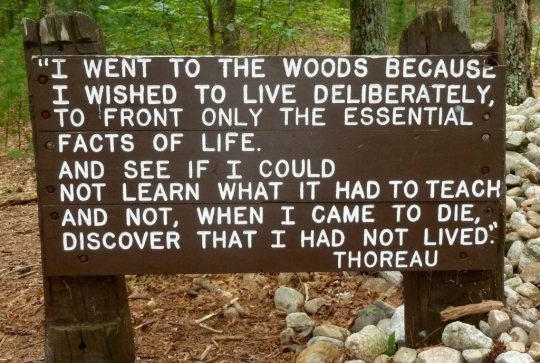
Emily St. Mandel’s Station Eleven is, in fact, a post-apocalyptic tale. But her narrative’s most clever survivors form a travelling Shakespeare troupe, demonstrating the power of art to heal in dire times.
For some existential musing reaped in self-isolation, Thoreau’s Life in the Woods always still provides.
And if the new stressors arising from this crisis find you busier than ever, but you long to slow down, travel journalist, Pico Iyer, in his prophetic 2014 book, The Art of Stillness, makes a strong case for the fact that “in our madly accelerating world, our lives are crowded, chaotic and noisy. So, there’s never been a greater need to slow down, tune out and give ourselves permission to be still.”
April 10, 2020
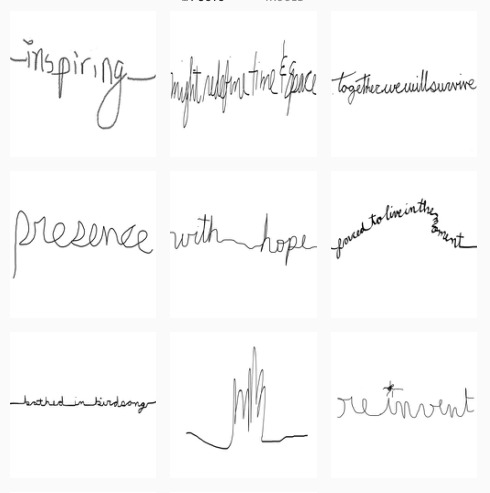
How Might We Fill This Space?
Never before have Memes, Tik tok or Cat Videos provided such many needed lifelines for people all over the world. But the video that most stirred me to action was this stunning dance collaboration that popped up in my Facebook feed, during the early days of self-isolation, before my first Zoom conference, before I’d seen my first collaborative musical Quarantine Song spoof. https://www.youtube.com/watch?v=B3pFxsYPLgU
This global initiative to weave together dance gestures, while performers were entirely physically separate, seeded the idea for a community art and writing project that I have recently started with a few friends.
In an effort to connect artists during this physically distant time, we have launched Spool of Thought. And all artistic contributions are welcome to the thread.
https://www.instagram.com/spoolofthought2020/
On this page, we invite people to respond to the question, “How might we fill this space?”as we adjust to different rhythms of being. The idea is to weave together our thoughts, through the fluid form of cursive writing, in a non-linear narrative documenting this unique time on our planet.
The full instructions are below, for those interested and eager to participate:
1.Using Notes (iPhone) or Evernote (Android) and the digital pen, draw a continuous cursive line from the left to right side of the note (arranged horizontally) and write a word, phrase or sentence that responds to the prompt: How Might We Fill This Space?
2. Save it to your photos.
3. Then,send it by email to: [email protected], and we will add your text to the Spool of Thought Instagram page.
4. Please include your name, your location, your occupation, and your Instagram@ for the caption of your photo.
5. And feel free to share this invite with your community, along with these instructions.
6. Finally, enjoy watching the spool unravel on @spoolofthought2020, as the thread grows, and tag us wherever you choose to share: #spoolofthought2020.
0 notes
Text
30 Years of TurboGrafX-16 & 25 Years of 32-X: A Lethal Combination!

Greetings and thank you once again for joining me in another anniversary retrospective! I know we are in the first month of 2020, but please indulge me and pretend it is still 2019 so I can say this is officially a piece commemorating the 30th anniversary of the North American launch of the NEC TurboGrafX-16 and the 25th anniversary of North American launch of the Sega 32X! Yes, this is the two-for-one anniversary special! I have been neglecting this for too long and wanted to have this up before the end of 2019, but I think I was a wee burnt out with my tomes I crafted for my other three flashbacks I posted throughout this past summer. I have good faith this will be a shorter piece because even though I have a history with both the TG16 and 32X, my experiences with them are both greatly after their original launches so I do not have those twee childhood memories of the 32X and TG16 as I did with the GameBoy and Genesis. Regardless, I do cherish my time with both ill-fated systems I will be covering today, so let us kickoff with the system that came out first, NEC’s TurboGrafX-16 in 1989.


Yup, these are the issues of Game Players I dug out of the closet and took poor quality cell phone pics for proof of where I first remember reading about the TurboGrafX. Even though TG16 launched in America in 1989, I do not recall seeing it in stores or hearing about it until 1994 when I got my first videogame magazine subscription to Game Players. Yes, I still have those 1994 issues of Game Players in my closet and if I can find the right issues I will attempt to paste in a semi-decent cell phone shot of the pages that referenced the TG16. If memory serves right, I believe there was a spread video pinball games that highlighted both Crush pinball titles for TG16, and another column highlighted TG16’s Ys Books I and II for being a revolutionary RPG title with its then-unprecedented cutscenes and voiceovers. I also discovered about TG16’s mascot, Bonk when reading a review in GP for the NES port of Bonk’s Adventure.

By consuming other gaming press media over the following years I eventually learned what happened with the TG16 and its CD add-on in America and how they did not fare as well as they did in Japan and quickly faded out within a year or two after the SNES launched in America. I never had a friend that owned the TG16 growing up, nor do I recall a store kiosk having any set up for play in my middle-of-nowhere hometown. I cannot remember even dabbling with hunting down TG16 emulators since I never saw the games out in the wild for sale at my local shops to peak my curiosity. So I believe the first time I played a TG16 game was when the Wii launch in 2006 and also debuted at its launch the Wii’s downloadable classic games for its ‘Virtual Console’ channel. The TG16 was one of the supported platforms and I recall downloading the hit multiplayer game, Bomberman ‘93 around or shortly after the Wii launch making it likely the first official TG16 game I played.
youtube
Aside from playing my first TG16 game in 2006 on the Wii, 2006 was a big year for learning a lot more about the system thanks in part to one particular podcast. Apple debuted podcasts in 2005 and other MP3 players quickly supported them too. I sampled countless gaming podcasts, but one I quickly got turned onto towards the end of 2005 was one Team Fremont Live. That podcast is still around to this day, but underwent a couple name changes and is now known as Super-the-Hardest. I quickly became a fan of the three hosts, John, Moe and Hilden and loved their take on videogames. They had frequent retro gaming segments on the show and the trio frequently waxed nostalgic for their TG16 memories. Over the years consuming their podcast and participating in their forums my knowledge for the system exponentially expanded! If you currently dig through the Super-the-Hardest archives or check out these links, you will find a wealthy amount of TG16 articles there to learn a ton about the platforms and their recommended games.

The then-Team Fremont Live hosts lived about a five hour drive away from me, and they had on open invite community event in the summer of 2006 where I first met them in person and gamed and drank the night away with them and their fellow community members. It was an awesome time, and in January 2007 they hosted another community event for their first ever year-end awards, ‘The Darryls!’ I remember meeting up with the three hosts the night before the event for a ‘packing party’ where we drank all night again and quickly got stone cold sober, literally, as we packed up the van with recording equipment in the middle of a January Midwest night of biting subzero temps! The Darryls transpired the next day and I got reacquainted with many community members again and there were several TVs set up with various games to play for everyone in what ended up being another memorable night with the TFL community. John, Moe and Hilden did a special presentation later on in the night for their 2006 best of game awards and did a contest drawing towards the end of the night that I was the lucky winner drawn. My prize was a TG16 system, complete in box and with a copy of the original pack-in game, Keith Courage in Alpha Zones! I was blown away and stunned the prize was going to be a system! That pic at the top of this article is indeed me being the proud new owner of a TG16! Keith Courage was a decent little platformer, but I would never become that skilled at it and would peter out of lives by levels two or three and regret never taking the time to master that game.
youtube
Thanks to listening to many hours of TFL at that point however and through other online research over the years I knew which games to hunt down. Luckily in 2007 and for the next few years TG16 releases remained affordable to hunt down as most games save for a select few went for under $20. I tracked down a far superior platformer in Bonk’s Revenge. Its vibrant visuals, challenging-but-fair platforming and adorably gruff mascot Bonk blew Keith Courage away and looked graphically on par with the other 16-bit platforms. World Court Tennis initially appeared as another run-of-the-mill tennis game, but diving into ‘Quest Mode’ provided an in-depth medieval narrative complete with an RPG-esque overworld and random tennis battles! I looked into getting the CD add-on, but from what I gathered it sounded like the add-on attachments had a high faulty rate by 2007 and were not worth the risk. Even with those drawbacks I regret missing out on the TG-CD games and only had the chance to dabble with a handful off of other collections and Virtual Console over the years. Fighting Street (aka the original Street Fighter) had its only American console physical release on the TG-CD, and I did not get a chance to play it until a Capcom released a arcade hits collection on the original Xbox. Ys Books I & II was a revolutionary RPG for what its cinemas and voiceovers debuted to the market, and it was not until the Wii Virtual Console that I finally had a chance to experience the original version. Turbo Technologies brokered a bonkers deal with EA to bring a little known version of Madden to TG-CD that I would have played the heck out of compared to the other gridiron game on the platform I will touch on shortly.

The TFL crew were big fans of shmups (aka the original ‘shooters’) and I recall them being high on Blazing Lazers and I wound up spending many hours trying (and failing) to vanquish that space shooter. Already being a diehard fan of videogame pinball in 2007, both Alien Crush and Devils Crush were among my first TG16 purchases. They were both fantastic multi-layered pinball titles, with several screens of verticality to flip the pinball through and vanquish enemies and mini-bosses away on the playfield. I loved both games, and if you want a current rendition of that then I highly suggest tracking down the recent release of Demon’s Tilt that is available on most current platforms. Demon’s Tilt is essentially a modern take on the Crush games, but on crack with amped up visual effects since it is capitalizing on the horsepower of modern systems. After accumulating these several titles I would make it a habit to add one or two more a year at an annual retro videogame expo I regularly attended in Milwaukee called the Midwest Gaming Classic. John, Moe and Hilden would also attend MGC most years around this time and I would make it a point to track them down at some point during the convention and get them to recommend me a TG16 for under $20. There recommendations never failed, and this was how I discovered NEC’s answer to Ikari Warriors (Hey, I was a huge fan of the NES game!) in the superior Bloody Wolf, and the quirky platformer, JJ and Jeff. The yearly MGC pick-up was how I finally procured a copy of the gore-slasher-fest that is Splatterhouse. I would also chance random games that caught my eye for the TG16 and did not go for that much. I loved my 8 and 16-bit sports games and took a shot on TV Sports Football, and it was a decent adaptation of the gridiron, but did not measure up to the many other football titles on the other 16-bit platforms.
youtube
The same can be said for the TG16’s sole American wrestling game, Battle Royal, it was an OK videogame grappler, but nothing that held my lasting attention. However, the excellent FirePro Wrestling series got its start on the platform as Japan-only exclusives, and I will give props to my former podcast co-hosts Chris & Lyzz for grabbing a copy of FirePro: Second Bout for me at MGC one year I could not make it. The FirePro games have evolved into the pinnacle of 2D wrestling games over the years, and it is fascinating to see how it started on the PC-Engine in Japan and even in FirePro’s earliest installments it was already a class above the competition. While both of these wrestling games went for under $20 by 2012, the next year when I returned to MGC in 2013 TG16 game prices inflated exponentially. For proof I was looking up some old MGC photos from my pictures library, and found some photos of Chris & Lyzz’s 2010 MGC loot-haul laid out on their bed. As you can see they picked up a TG16 and several games, if you zoom in on the photo you can see most of their games went for under $20. I have no idea what brought on the sudden demand, but a vast majority of TG16 games started going for around $50-100 within a couple years and that was without jewel cases and instructions!
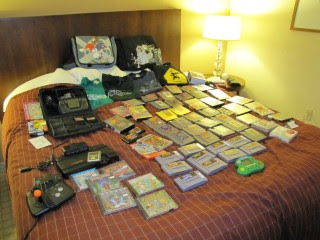
For this piece, I contacted Chris and Lyzz for their memories of picking up the TG16 and their favorite games they have played since, and Chris responded back with the following: ”I can't remember much. I just remembered that I liked Bonk’s Adventure and Fantasy Zone. Bonk’s Adventure because of how much I used to like side scrolling games and that is the only game that I wanted to play at the time that didn't come out for the NES/SNES/GEN. Fantasy Zone because of the sheer weirdness factor of it.” 2009 marked the 20th anniversary of the TG16 launching in North America and I wanted to do something special to commemorate it. I was in the midst hosting my own videogame podcast, On Tap, at the time and invited John, Moe and Hilden to come on for a special TurboGrafX anniversary episode! It was a delight to have them on the show and have them take us all to school with their master’s degree knowledge of all things Turbo and reminisce about the TG16 for an hour. I recently dug that episode out of the archives and uploaded it onto my YouTube channel and will embed it below for your listening pleasure!
youtube
This is a special TG16 20th anniversary podcast I recorded 10 years ago! Add it to your queue to listen to for more TG16 wisdom! I would bust out the TG16 once every year or two until several years ago when the WiiU became my virtual replacement. The WiiU started supporting the TG16 by uploading a ton of the TG16 library to the WiiU version of the Virtual Console in 2016 and uploaded nearly a game a week from mid-2016 until early 2018, well after the launch of the Switch. I sold my Wii after owning it for only a year and only owned a few TG16 games for it, so this late infusion of TG16 titles on the WiiU caught my eye (and other Retro enthusiasts too). This culminated in about 50 TG16 games hitting the WiiU by the end with even a few former Japan exclusives among them….and I bought all of them! The original Wii Virtual Console that is backwards compatible on the WiiU remained open until early 2018 to purchase their TG16 games too which I used to acquire other acclaimed TG16-CD games not available on the WiiU like Castlevania: Rondo of Blood and Ys Books I and II.
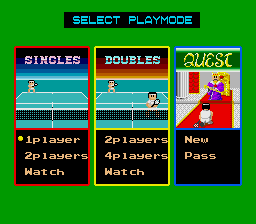
A few times a year I fire up my WiiU and pick a few random games to play from my many Virtual Console purchases. It was this way I finally got around to trying out the Legend of Zelda-inspired Neutopia and having a fun night with a couple buddies hack and slashing away in Dungeon Explorer. I also got to take in the ridiculously huge sprites of the brawler China Warrior and finally experienced TG16’s take on Outrun in Victory Run. The WiiU surprisingly wound up a gratifying legit alternative to the now-absurd asking prices for used TG16 games, and a convenient way to make TG16 games appear on a HDTV without the fuzziness that happens when I plug an SD system into a HDTV. While I never knew of the TG16 during its active North American lifespan or got a chance to play it until this century, I still have priceless memories of discovering hit titles exclusive to that system that stood out in a way unlike anything else on its 16-bit competition. The 32X is a whole other beast though. I remember being a furious 11 year-old upon its release in 1994. I vividly recall the hype in Game Players for it and even 11 year-old Dale thought Sega was out of its mind for releasing a $150 add-on for the Genesis merely several months before the Saturn when Sega already had plenty on the market to tide them by with the Genesis, Game Gear and SegaCD. A wee shy of 50 games only came out for it in the little over a year games were published for the 32X, and nearly half of them were marginally enhanced Genesis titles. From reading mags during its lifespan and hearing other gaming media reflect back on it throughout the years I gathered the add-on had a handful of standout exclusives, but was largely forgettable and not worth tracking down, and I hand no plans to do so, until….

Living proof of the speculated demon that is Sega's Tower of Power! …In 2009 a co-worker was about to get married and was parting with his gaming collection to raise funds for the wedding/honeymoon. He knew me as an ardent game player and gave me a print out of what he was selling and his asking prices. This was still a couple years before the big retro used game boom I described above, because around same time a couple years later 32X game prices jumped just like TG16 games. Still, I noticed most of his prices were at the higher end of most eBay auctions when I researched them online. I did not have a SegaCD or 32X in my collection at the time and there were at least a few exclusives on both systems I always wanted to try, and with the funds going to a good cause I made an offer for those systems with about a dozen games in the middle range of what he was asking for and what other asking prices I saw online at the time. I want to say I paid roughly $200 for the lot.
youtube
I got about six or seven games for 32X from my co-worker and later tracked down three or four more over the next year or two to get the other 32X games I wanted. I had a couple up-ports/’Remasters’ from the Genesis for 32X like Toughman Contest and WWF RAW. Toughman Contest was EA’s gritty take on Punch-Out that I was a big fan of, and it got a big endorsement from toughman hot-shot at the time Butterbean. The 32X version did not add too much other than lightly touched up graphics and framerates. The 32X version of RAW though had a couple extra weapons at ringside to bash adversaries away with and its own exclusive wrestler, the masked Kwang, who later on went to be better known as Savio Vega in the WWF throughout the 90s. Unfortunately the gameplay for those old Acclaim 16-bit games had those tired button mashing grappling meters that killed your thumbs and was a few entries old at that point so it did not get too much playtime from me. A 32X version I did enjoy was of Doom, and for a few years it was the only version of the iconic first person shooter I owned until a version hit download on 360 a couple years later. I was a big fan of Sega’s early polygonal titles, Virtua Racing Deluxe and Virtua Fighter on the 32X. The launch Saturn version of Virtua Fighter was notorious for being a buggy mess, and the 32X version that released a few months later surprisingly had a smooth framerate and played as crisp as I recalled in the arcades. Sega somehow against all odds managed a port of Virtua Fighter on the Genesis, but had a somewhat cleaner version with exclusive tracks on the 32X later that year. I loved me some Virtua Racer and if I ever get a Switch one of the first eShop downloads I plan on getting is the recent touched up remake of Sega’s first polygonal racer M2 developed last year. Finally the last upper-tier quality game I have in my 32X library is Sega’s arcade port of Star Wars Arcade. It only had the three missions of the arcade that boasted dog-fighting missions on the Death Star and a Super Destroyer, but they were quick mindless, pick-up-and-play blasting fun.
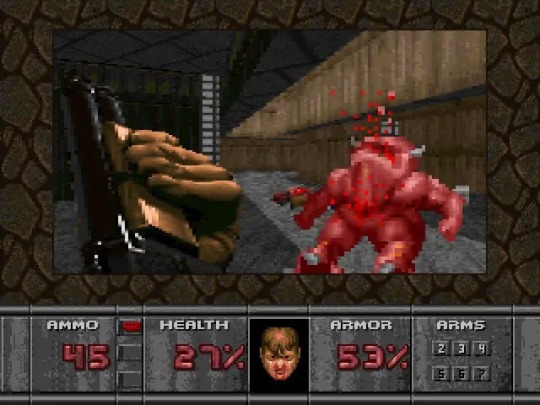
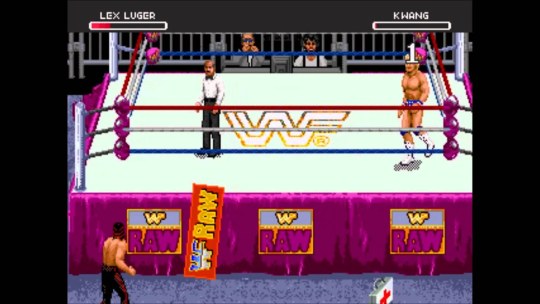


As seen above, Doom had a pretty solid 32X port at the sacrifice of screen resolution and I suffered through RAW's middling gameplay for its exclusive character Kwang and extra ringside weapons. There were five 32X CD games released with Slam City and Corpse Killer pictured above in their unremarkable glory! I do own all five ‘Sega CD 32X’ games that come on discs for the Sega CD, but require the 32X in order to load. All five of these games are FMV-based games from Sega and Digital Pictures and all have releases on the SegaCD already, but the 32X CD versions have slightly better resolutions and framerates thanks to the added power from the 32X. None of the five games are all that fun regrettably. I have awful memories of the clunky controls in one-on-one basketball in Slam City with Scottie Pippen and never getting a good memory for the order of camera patterns in order to succeed in Night Trap. I guess Corpse Killer was a semi-decent on-rails light gun shooter with digital characters similar to Area 51 of that same era, but with far cheesier acting and implementation. Both Night Trap and Corpse Killer recently got touched up remasters on the PS4 for those brave enough to see how they hold up today.

There were a few other 32X games I wanted to track down, but I neither saw them in the wild, had negative buzz or at that time were already going for a bit more than I preferred, and are selling for outrageously more today. I always heard good things about Knuckles Chaotix being a decent substitute for a Sonic-style platformer on the system, but that one always escaped me. I loved the World Series Baseball games on Genesis, and the 32X got a slightly up-res’d version of the ’95 release, but it had such a low print run that it is one of the higher selling games of the 32X library. I liked the original 80s version of the arcade shmup, Zaxxon and was bummed to see the polygonal 32X follow-up get panned with negative buzz which kept me away from that version. Finally, the comic book game nerd in me always wanted to own Spider-Man: Web of Fire, but with it having a low print run being the final the 32X game, and combined for being an awful game to boot were a lethal combo to keep me away from it for good. That wraps up this two-for-one flashback anniversary special on the 32X and TurboGrafX-16. What were some of your favorite games or memories of those systems? Feel free to comment about them below or reach out to me on Twitter @Gruel. I guess combining my memories of both systems went on for a bit longer than I anticipated, but I managed a modicum of brevity by being about a 1000 words shorter than my gigantic Dreamcast special. If you want to check that one out or my anniversary specials on the GameBoy or Genesis, than check the links below!
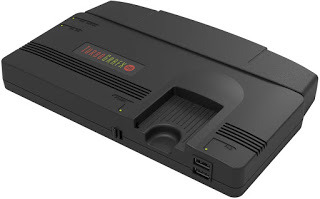
UPDATE: A couple hours after posting this I realized I completely forgot to touch on the fast approaching release of the TurboGrafX Mini in North America in several weeks!!! It is launching as an Amazon exclusive so do not be on the lookout for it in retail stores right away. It has over 50 games, about half of which are Japanese PC Engine versions. If you want something more physical than pick and choosing which games to download on the WiiU, the TurboGrafX mini is an ideal way to start discovering most of the top titles for the system! As for the 32X…..Sega did release their own official Genesis mini last fall, and did include a 32X add-on mini attachment…..that is sadly for visual purposes only and is completely non-electrical. While the overlords of the TG16 library at Konami have re-released TG16 games on several platforms over the years I cannot think of a single 32X game that got one digital or physical re-release unless you count the up-ports of Night Trap and Corpse Killer Keep your fingers crossed though, a working 32X mini may one day happen. My Other Gaming Flashbacks Dreamcast 20th Anniversary GameBoy 30th Anniversary Genesis 30th Anniversary
#videogames#Sega#NEC#32x#turbografx#turbografx-16#bonk#sonic#splatterhouse#bloody wolf#blazing lazers#firepro wrestling#wwf raw#wwe raw
0 notes
Text
The Travel & Hospitality Industry is Being Disrupted, Again.
New Post has been published on http://naturalanxietyremediestips.com/the-travel-amp-hospitality-industry-is-being-disrupted-again/
The Travel & Hospitality Industry is Being Disrupted, Again.


If you’ve followed my Inc.com column, you know I work with both big companies and start-ups around the world. My research, consulting and speaking give me a glimpse into the fledgling trends and upstarts that will one day become tomorrow’s business behemoths.
As part of a new series of articles I’m writing called Everything Transformed, I’m focusing on the widespread disruption of just about every industry on the planet. I’m doing this by connecting into my network at Plug and Play, Silicon Valley’s largest venture capital firm and startup accelerator.
Plug and Play matches up large corporations with start-ups in an “innovation ecosystem” that results in partnership opportunities, joint-ventures, investments and acquisitions all focused on creating the next big thing. Each month I’m tapping into the industry expertise and experience of one of Plug and Play’s 15 industry verticals to highlight the disruptive trends, technologies and companies shaping the future.
It’s no wonder Plug and Play created a vertical focused on travel and hospitality. Travel and hospitality accounts for 10% of employment worldwide, and it is estimated that the sector contributed $8 Trillion to the global economy in 2017. The “travel-tech” sector has attracted over $19B+ since 2008. It is a large, fast-growing industry tied directly to global consumption growth, and with populations and incomes increasing, the demand for travel products and services will only get bigger.
According to Amir Amidi, Managing Partner of Plug and Play’s program, “the future of travel involves seamless traveler experiences enabled by various technology platforms, and the companies creating these will become the future backbone of an enormous industry just like iOs and Android underlie just about every mobile device.”
So what are the big bang disrupters on the horizon? Some of these start-ups are fast becoming the next big thing:
TripActions: TripActions is a corporate travel management company which recently raised $154 million in VC funding at a $1 billion valuation.
Hopper: Hopper is a mobile-only travel app which uses AI to analyze billions of prices daily to predict how prices will change and tells you whether to buy or wait. It recently raised $100 million in funding and is valued at $780 million.
Lumo: Lumo helps everyone from individual travellers to large organizations predict flight delays hours, days and weeks ahead of time to deal with the costs and headaches associated with delays and missed flights.
Klook: Klook is Asia’s largest in-destination travel services booking platform. It has raised a total of $296.5M in funding over 5 rounds.
Away: Away is a travel accessories brand selling high-end smart luggage direct to consumers for a low price. It recently raised $50 million to drive growth.
Go Moment: Go Moment has become the world’s largest artificial intelligence hotel concierge provider with technology powered by IBM Watson.
According to Lio Chen, Managing Director of Plug and Play Travel, “with the exception of a few home runs, travel startups have not received much attention from traditional VC investors due to lackluster returns.” Chris Hemmeter, Managing Director of Thayer Ventures, a venture capital firm focused on travel technology, sees that changing: “Travel suppliers are embracing innovation and experimentation like never before and are becoming increasingly fixated on the entire guest journey.” Established travel and hospitality companies are getting into the innovation act by partnering with disruptive upstarts before they get “Airbnbed” again.
JetBlue’s subsidiary, JetBlue Technology Ventures (JTV), recently invested in and currently works with the omni-channel communication platform Gladly. Gladly gathers all travel information about an individual no matter if it comes from email, text, etc., allowing customer service agents to instantly know exactly what the customer is calling about, whether it’s because they’ve had a flight cancellation or are responding to a text they’ve received. “Gladly makes you a person rather than a number,” says Bonny Simi, President of JTV. “We started with a proof of concept and we did an investment and now we’re doing a full-scale implementation.”
Within the enormous travel and hospitality industry, opportunities for technology innovation and investment are vast. The greatest growth and competitive advantage – for startups and corporate innovators alike – will come from leveraging technology to:
Create new products and services
Enhance the end-to-end traveler experience
Streamline operations
Innovate business models
So what technologies should we watch? Here are a few:
Blockchain: The travel and hospitality sector is notoriously segmented so blockchain will allow for seamless payments & customer service across different travel suppliers
Natural Language Processing (NLP): NLP underlies chatbots and voice recognition and will support real-time recommendations as travelers shop for everything from airfares to experiences, online or even through Amazon’s Alexa
Augmented Reality (AR): AR functionality will superimpose data onto smartphone screens to indicate nearby points of interest like dining and attractions as tourists navigate, enhancing the traveler experience.
Predictive Analytics & Machine Learning: Intelligent computing will help proactively give travelers what they want through recommendations, proactive customer service, assisting avoiding travel disruptions, and more.
At the end of the day, travel and hospitality companies all want similar things: increase revenue, reduce costs, boost operational efficiency, enhance the customer experience and build loyalty. Plug and Play’s recent research on the disruptive forces shaping the travel and hospitality sector outlines all these emerging trends (and others) in more detail.
0 notes